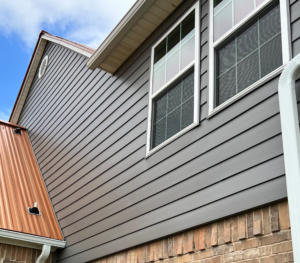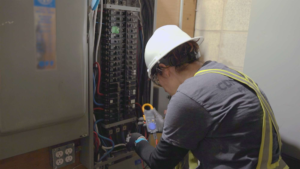A well-maintained landscape makes a home more attractive and increases its value. It is also beneficial to the environment and provides a number of physical and psychological benefits.
A good landscaper will design plantings that are both visually appealing and ecologically sound. This includes matching plant species that share similar water requirements. Contact Oasis Landscaping of Harrisburg now!

Color is one of the most powerful elements in the landscape, evoking emotions and creating focal points. It can elevate a landscape by establishing harmony, enhancing space and perspective, embracing seasonal transitions, and promoting relaxation. By incorporating the principles of color theory, homeowners can create visually stunning and emotionally satisfying outdoor environments.
When choosing a color scheme for your garden, consider the color of your house and other hardscape features. Blending with your home’s color can be a good idea if you want the landscaping to look as if it is an extension of the house, or you may prefer contrasting colors to make your landscape stand out from the home.
Once you have decided on a palette, begin by gathering paint chips from your local home improvement store or floral shop to find the colors that appeal to you. These colors will serve as the foundation for your design and can help guide you in selecting plants and finish materials for your project.
A monochromatic color scheme utilizes shades and tints of the same color to provide a variety in your landscape without being overbearing. This is a popular option for gardens that have limited space as it allows you to fill the garden with different plants of the same color while still maintaining visual balance.
Another popular option for color schemes in the landscape is complementary colors, which are located opposite each other on the color wheel. Complementary color pairs, such as blue and orange or red and purple, work well together to add contrast to your garden.
Contrasting colors in the landscape can also be used to create a sense of movement or depth. This is achieved by utilizing a darker color for the background and a lighter color for the foreground, such as using a dark mulch or rock with a light-colored ground cover or flowering plant.
The use of color is often referred to as the “fifth element” in landscape architecture, after form, function, and circulation patterns have been addressed. However, it is important to remember that color is only a temporary element in the landscape and should be used as an accent to highlight more enduring design elements such as texture and form.
Form
One of the most important aspects of any landscape design is form. Shape refers to the two-dimensional attributes of a plant, such as its silhouette and where its broadest and narrowest areas are. Form, however, refers to the way a plant will grow and its three-dimensional characteristics.
Form can be found in many different ways, from the rounded forms of flower beds to the sculptural shapes of water features and walkways. It is also present in the vertical structures like arbors and tall trees that create a framework for the rest of the landscape.
Lines are another element that can contribute to the structure of a landscape. Whether they are perceived lines or actual paths and walkways, they help control the movement of the eye around a property. They can take on a variety of shapes, including straight, curved, horizontal, and diagonal. Straight lines tend to have a more formal character and are associated with symmetrical designs, while curved lines have a more natural and relaxed feel. They can be created with hardscape materials, such as pavers or natural stone, or with vegetation, such as grass, sod and tree rings.
When creating a form composition, it is crucial to balance size, color and texture. Too much of any one of these elements can overwhelm a landscape, while too little can create an unbalanced and disjointed look. This is why it is important to study designs that appeal to you and use them as a guideline for your own landscape. However, you should always consider your site conditions and unique growing conditions when implementing the design.
A well-designed landscape serves its practical function but is also memorable and emotionally resonant for those who experience it. Whether it is a rainwater management system or an artistic sculpture, the best landscapes are able to integrate both function and form seamlessly to produce a space that works on all levels.
Texture
Although it is often overlooked, texture plays a huge role in the overall look and feel of your landscape. The textures of plants, hardscapes and mulch create a sense of depth and interest in the garden. Contrasting textures are also key to a well-designed landscape. A landscape with too much of one type of texture can appear unharmonious and visually overwhelming.
Texture can be found in the leaves, flowers, bark and stems of the plants as well as in paving materials like gravel or stones. Planting a variety of plant textures is an easy way to add visual interest to your garden. For example, pairing mondo grass with English ivy or oakleaf holly and mixing it with rounded river rock will add a great deal of visual contrast to the garden.
The use of line in your landscape is another great way to create a sense of depth and movement in the garden. Whether perceived lines (like the shape of your garden bed or the line of trees in a row) or actual pathways created by winding gravel trails, these are important design elements that draw and hold the eye.
A mix of textures is necessary in any landscape. Fine textures (like small leaves and delicate branches) are softer and more delicate, while coarse textures appear more robust and substantial. It is important to combine these different textures so that your landscape has a balance of contrasting and complementary textures.
Adding a variety of textures is an easy and cost-effective way to enhance the look and feel of your property. Creating a balanced landscape that incorporates both soft and hard elements can make your property stand out above the rest and provide a place that you will enjoy spending time. Not only that, but a garden full of beauty can encourage physical activity and promote a healthy lifestyle by encouraging the release of endorphins, the body’s natural “feel-good” chemicals. So why not give your property a makeover this spring? Contact the experts at Lawrence Landscape for more information on how we can help you improve the look and feel of your property.
Lighting
Lighting is a powerful way to transform the appearance of your landscaping. It can add depth, highlight the shapes of your favorite plants and structures, illuminate the paths you use at night, and create a cozy, intimate space that’s great for outdoor living. A well-designed lighting system also makes your yard safer for nighttime navigation and helps protect your property.
A qualified landscape lighting pro can help you find the best lights for your needs, taking into consideration your desired effects and the number of areas you want to light up. They’ll consider the type of lighting you want, including path, spot and flood lights, as well as control options like timers and smart home integration systems.
LED lights are quickly becoming the new standard for landscape lighting due to their longevity, low operating costs and energy efficiency. They are available in a wide range of color temperatures, allowing you to match the look and feel of your landscape to your home’s décor and architecture. Warmer LEDs (approximately 2,700-3,000K) provide a more natural, inviting look while cool whites (6,500K and up) offer more of a moonlit effect.
While some lights are recessed into the ground, others stand proudly like outdoor lamps or sconces, creating a more visible feature on your property. Some homeowners even splurge on stylized fixtures that mimic the look of indoor lighting to make a bold, statement-making style.
The number of lights needed depends on the size of the space and the purpose of the lighting: Do you want to create a warm, cozy retreat for outdoor dining or lounge? Do you need to illuminate pathways or stairs for safety? The goal of your landscaping design should help you narrow down the types of lighting you need.
Wired landscape lighting requires a transformer, cables to carry the current, and lights. The choice of bulbs determines the brightness, color temperature and energy efficiency of each fixture. You should always consult a professional when installing wired landscape lighting, as working with electricity is dangerous and requires the skills of a trained pro. Especially with outdoor lighting that incorporates motion sensors or involves cutting into soffits and running wiring through attics, it’s wise to leave these projects to a pro to avoid serious and expensive damage to your home.








